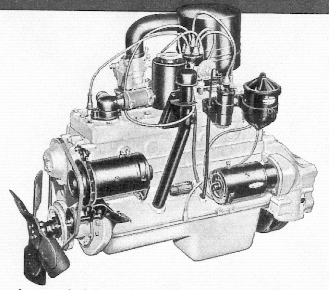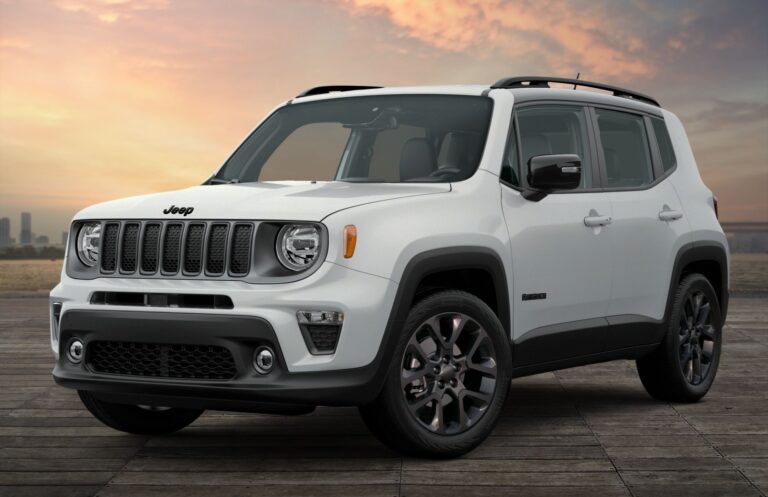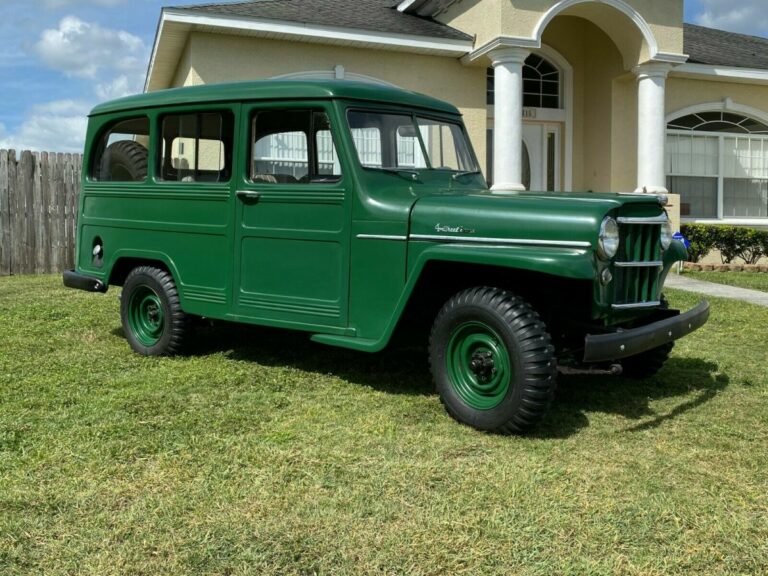Jeep Mutt For Sale: A Comprehensive Guide to Acquiring a Piece of Military History
Jeep Mutt For Sale: A Comprehensive Guide to Acquiring a Piece of Military History jeeps.truckstrend.com
The rumble of its engine, the distinctive flat-fendered silhouette, and the unmistakable aura of military heritage – the Jeep Mutt, officially known as the M151 Military Utility Tactical Truck, stands as a formidable icon in the annals of automotive and military history. Far more than just a vehicle, the Mutt represents a pivotal era, serving valiantly in conflicts from Vietnam to the Persian Gulf. For enthusiasts, collectors, and off-road adventurers, the prospect of finding a Jeep Mutt for sale isn’t just about purchasing a vehicle; it’s about owning a tangible piece of the past, a rugged testament to American engineering and wartime resilience.
This comprehensive guide aims to demystify the process of acquiring an M151 MUTT. From understanding its historical significance and unique features to navigating the complexities of the market, identifying critical inspection points, and grasping the crucial legal considerations, we will equip you with the knowledge needed to confidently pursue your own piece of military legend. Whether you’re seeking a restoration project, a robust off-road companion, or a museum-quality display, embarking on the journey to find a Jeep Mutt for sale requires careful research and a thorough understanding of what makes these machines so special – and sometimes, so challenging to own.
Jeep Mutt For Sale: A Comprehensive Guide to Acquiring a Piece of Military History
Understanding the M151 MUTT: A Brief History and Legacy
The M151 MUTT, developed by Ford Motor Company in the late 1950s and later produced by AM General, was designed to replace the aging Willys MB and Ford GPW "Jeeps" of World War II and Korean War fame. Its innovative design incorporated a unibody construction and, most notably, an independent coil spring suspension system on all four wheels. This radical departure from its predecessors offered superior off-road performance, greater comfort for its occupants, and increased stability at higher speeds, marking a significant technological leap in light military utility vehicles.
First deployed in 1959, the M151 saw extensive service throughout the Vietnam War, proving its durability and versatility in challenging jungle terrain. Over its production life, several variants emerged:
- M151: The initial production model.
- M151A1: Introduced in 1964, featuring minor improvements like redesigned front suspension components and turn signals on the fenders.
- M151A2: The most common variant, introduced in 1969, which addressed stability concerns of earlier models by redesigning the rear suspension to minimize "rear wheel tuck-under" during hard cornering, significantly improving safety. This variant is the most sought-after due to its improved handling.
![]()
The M151 served the U.S. military and various allied nations for over three decades before being phased out in favor of the Humvee (HMMWV) in the late 1980s. Its legacy, however, endures, not just in military museums, but in the garages and collections of enthusiasts worldwide.
Why Buy a Jeep Mutt? The Appeal of a Military Icon
The allure of owning a Jeep Mutt extends beyond simple vehicle ownership. It’s an immersion into history, a connection to the bravery of service members, and an appreciation for rugged, purpose-built machinery. Here are some compelling reasons why enthusiasts seek out a Jeep Mutt for sale:

- Historical Significance: Owning an M151 means possessing a direct link to major 20th-century conflicts and the evolution of military transport. It’s a tangible piece of history that sparks conversations and educates.
- Unrivaled Off-Road Capability: The M151’s independent suspension, lightweight design, and robust 4×4 system make it an incredibly capable off-road vehicle, adept at navigating challenging terrains that would halt many modern SUVs.
- Unique Driving Experience: Driving a Mutt is a visceral experience. Its manual transmission, direct steering, and open-air design offer a connection to the road (or trail) that is increasingly rare in contemporary vehicles.
- Collector’s Item Potential: Well-preserved or expertly restored M151s can appreciate in value, especially those with verifiable service history or unique variants. They are distinct from civilian Jeeps, making them highly desirable to military vehicle collectors.
- Restoration Project: For those who enjoy mechanical work, a Mutt offers a rewarding project. The design is relatively straightforward, and parts, while sometimes specialized, are available through dedicated suppliers.
- Community and Camaraderie: Owning a military vehicle opens doors to a vibrant community of like-minded enthusiasts, clubs, and events, fostering a strong sense of camaraderie and shared passion.
Navigating the Market: Where to Find a Jeep Mutt For Sale
Finding a Jeep Mutt for sale requires a targeted approach, as these are specialized vehicles not typically found on mainstream used car lots.
- Online Marketplaces & Forums:
- Dedicated Military Vehicle Websites: Sites like G503.com (the Military Vehicle Preservation Association forum), SteelSoldiers.com, and various M151-specific forums are prime hunting grounds. Sellers here are often knowledgeable enthusiasts.
- Auction Sites: eBay Motors occasionally lists M151s, but proceed with extreme caution and verify seller reputation.
- Classic Car & Auction Aggregators: Hemmings, Bring a Trailer, and other classic vehicle sites sometimes feature Mutts, often with detailed listings and bidding processes.
- Specialized Military Vehicle Dealers: A handful of dealers across the country specialize in surplus military vehicles. While prices might be higher, they often offer inspected, running vehicles and can assist with title issues (where applicable).
- Government Surplus Auctions: Periodically, government agencies or defense contractors may auction off surplus vehicles. These can be incredible deals but often require significant work and come with "as-is, where-is" conditions.
- Military Vehicle Shows & Rallies: Attending events like the MVPA Convention, Tower Park (CA), or local military vehicle shows is an excellent way to see Mutts in person, network with owners, and find out about vehicles for sale by private parties.
- Word-of-Mouth: Join military vehicle clubs. Many transactions happen within these communities before a vehicle is ever publicly listed.
What to Look For: Essential Inspection Checklist for Prospective Buyers
Before committing to a Jeep Mutt for sale, a thorough inspection is paramount. Given their military past and age, many will have signs of hard use, neglect, or previous repairs.
- Crucial Legal Status (Title & Registration): This is the single most important consideration. Due to safety concerns (specifically, the independent rear suspension of early M151 and M151A1 models which could lead to "tuck-under" and rollovers under specific conditions), the U.S. government issued a directive in the late 1980s that surplus M151s sold to the public were to be "crushed" to prevent them from being registered for street use. While many were indeed destroyed, some slipped through, and others were legally acquired before the directive.
- Verify if it has a clear, transferable title for road use. Many are sold with a "bill of sale only" or "off-road use only" titles.
- Research your specific state’s laws. Some states are more lenient regarding registering historic military vehicles or allow "kit car" or "assembled vehicle" titles if significant modifications are made. Others are extremely strict.
- Assume it is NOT street legal until proven otherwise. Most Mutts are bought for off-road use, parades, or static display.
- Rust and Body Condition:
- Unibody Frame: Inspect for rust, cracks, or previous repairs, especially where suspension components attach.
- Floorboards & Hat Channels: Common rust areas due to water ingress.
- Battery Tray Area: Prone to rust from battery acid.
- Body Panels: Look for dents, patches, and signs of Bondo.
- Engine & Drivetrain:
- Engine: Check for leaks, unusual noises, smoke from the exhaust, and compression. The M151 uses a 2.3L (141 cu in) 4-cylinder gasoline engine.
- Transmission: Test all gears, including reverse. Listen for grinding or slippage.
- Transfer Case & 4×4: Engage 4WD high and low. Ensure smooth engagement.
- Axles: Check for leaks, play in the universal joints.
- Suspension:
- Independent Suspension: Inspect all four corners for worn bushings, bent components, leaking shocks, and proper ride height. This is a complex system unique to the Mutt.
- Electrical System: Test all lights, gauges, wipers, and the horn. Check wiring for rodent damage or amateur repairs.
- Brakes: Ensure firm pedal feel and effective braking. Inspect lines, calipers/wheel cylinders, and master cylinder for leaks.
- Tires: Check for dry rot, tread wear, and matching sizes.
- Documentation: Seek out any service records, previous titles, or military documentation (e.g., SF97 – Certificate of Release of a Motor Vehicle).
The Purchase Process: From Negotiation to Transportation
Once you’ve found a suitable Jeep Mutt for sale, the purchase process involves several steps:
- Set a Realistic Budget: Beyond the purchase price, factor in transportation, potential restoration costs, parts, and legality solutions.
- Negotiation: Research comparable sales. Be prepared to walk away if the price is too high or the vehicle doesn’t meet your expectations. Point out any discovered flaws to justify a lower offer.
- Payment: Use secure methods like bank transfers or certified checks. Avoid cash for large sums.
- Documentation: Insist on a clear bill of sale detailing the vehicle’s VIN, sale price, buyer/seller information, and "as-is" condition. If a title exists, ensure it’s properly signed over.
- Transportation: Most M151s will need to be trailered, especially if they are not street legal or are in project condition. Arrange for a suitable trailer or a specialized transport company.
- Insurance: Even for non-street legal vehicles, consider collector or off-road insurance to protect your investment from theft or damage.
Ownership Considerations: Maintenance, Restoration, and Legality Revisited
Owning a Jeep Mutt is a commitment. Here’s what to expect:
- Maintenance: While robust, Mutts are old vehicles. Regular maintenance is crucial. Common issues include fuel system problems (clogged tanks, carburetors), electrical gremlins, and worn suspension components.
- Parts Availability: Many parts are available through specialized military surplus dealers and online vendors. However, some specific M151 parts can be scarce or expensive. Joining military vehicle clubs can provide access to shared resources and knowledge.
- Restoration: Whether a full frame-off restoration or a simpler running repair, be prepared for time and financial investment. Sourcing period-correct parts, specialized tools, and potentially professional assistance can add up.
- Legality (Reiterated and Expanded): This cannot be stressed enough. The "crush order" was designed to keep M151s off public roads due to the perceived safety risk of their independent rear suspension (especially the M151 and M151A1, less so the M151A2 which had improved design).
- Most M151s cannot be legally registered for street use in the U.S. unless they were acquired before the crush order and retain a street-legal title, or if a specific state allows exceptions (e.g., historical vehicle registration for very limited use, or if registered as a "kit car" after significant modification and inspection).
- Primary uses: Off-road recreation, private property use, parades (often requiring special permits), static display, or museum exhibits.
- Do your homework: Before even looking at a Jeep Mutt for sale, contact your state’s Department of Motor Vehicles (DMV) or equivalent agency to understand their specific regulations regarding surplus military vehicles and titling. Misunderstanding this can lead to a costly, unusable asset.
- Community Engagement: Joining a local or national military vehicle preservation association is highly recommended. These organizations offer invaluable technical advice, parts sources, event information, and a supportive network.
Price Table for Jeep Mutt For Sale
Prices for a Jeep Mutt (M151 MUTT) can vary dramatically based on condition, originality, included accessories, and most critically, its legal status regarding street use. The table below provides general ranges; actual prices may differ.
| Condition Category | Price Range (USD) | Key Factors Affecting Price | Typical Buyer |
|---|---|---|---|
| Project/Parts Vehicle | $2,000 – $6,000 | Non-running, significant rust/damage, missing components, bill of sale only. | Restorer, parts donor, someone seeking a major challenge. |
| Running/Driving (Rough) | $6,000 – $12,000 | Runs but needs substantial mechanical/cosmetic work, potentially no street title. | Enthusiast willing to invest time/money, off-road user. |
| Good Original/Restored | $12,000 – $25,000 | Functional, presentable, minor flaws, may or may not have street title. | Collector, casual off-roader, parade participant. |
| Show Quality/Museum Grade | $25,000 – $40,000+ | Meticulous restoration, original components, period-correct, excellent condition, rare street title possible. | Serious collector, museum, investment buyer. |
Note: Vehicles with verifiable street-legal titles (especially the M151A2) command a significant premium due to their rarity and usability on public roads (where allowed by state law).
Frequently Asked Questions (FAQ) About Jeep Mutt For Sale
Q1: Is the Jeep Mutt (M151) street legal in the United States?
A: Generally, no. Most M151s released as military surplus were mandated to be "crushed" to prevent civilian registration due to safety concerns (specifically, the independent rear suspension’s tendency to "tuck-under" in hard cornering on earlier models). While some escaped this fate or were acquired pre-directive, it’s crucial to verify the vehicle’s title status and research your specific state’s laws regarding the registration of surplus military vehicles. Many are sold for off-road use, private property, or parade display only.
Q2: What’s the "crush order" I keep hearing about?
A: In the late 1980s, the U.S. government issued a directive that surplus M151s sold to the public had to be rendered unusable for road use, often by crushing the chassis. This was a safety measure, primarily targeting the M151 and M151A1 variants due to their handling characteristics at speed.
Q3: Where can I find parts for an M151 MUTT?
A: Parts are available through specialized military surplus dealers, online vendors focusing on vintage military vehicles, and within the extensive network of military vehicle clubs and forums. Many common components are shared with other Ford or AMC vehicles of the era, but specific M151 parts can be unique.
Q4: What’s the main difference between the M151A1 and M151A2?
A: The M151A2, introduced in 1969, featured a redesigned rear suspension geometry that significantly improved handling and reduced the "tuck-under" tendency of the earlier M151 and M151A1 models, making it safer. The A2 is generally the most desirable variant.
Q5: How much does a Jeep Mutt weigh?
A: An M151 MUTT typically weighs around 2,300 to 2,400 pounds (approximately 1,043 to 1,089 kg) when empty.
Q6: Is it hard to drive a Jeep Mutt?
A: Driving a Mutt is different from modern vehicles. It has manual steering, manual transmission, and limited creature comforts. It’s a direct, visceral driving experience that requires attention and practice, especially due to its unique suspension and military-grade ruggedness.
Q7: Can I register an M151 as a classic or antique vehicle?
A: This depends entirely on your state’s laws and if the vehicle has a clean, transferable title for road use. Even if it qualifies as an antique by age, the government’s "crush order" and subsequent titling restrictions often supersede typical antique vehicle registration processes for M151s. Always check with your local DMV first.
Concluding Summary
The quest for a Jeep Mutt for sale is an exciting endeavor for anyone drawn to military history, rugged off-roading, or the unique challenge of restoring a classic. The M151 MUTT represents a pivotal chapter in automotive design and military service, offering a compelling blend of historical significance and mechanical ingenuity.
However, entering this niche market requires diligence. Thorough research, meticulous inspection, and a clear understanding of the crucial legal restrictions regarding street use are paramount. While the allure of owning a piece of history is strong, it’s essential to approach the purchase with eyes wide open, prepared for the unique ownership responsibilities that come with these iconic machines. For the right enthusiast, the M151 MUTT is more than just a vehicle; it’s a rewarding project, a powerful off-road companion, and a lasting connection to a storied past.





